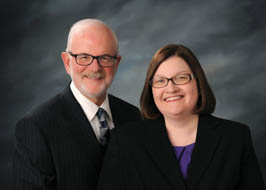As of 9/1/2009, only 1,711 permanent loan modifications
1.26% trial modifications made permanent
1 in 8 mortgages in default or foreclosure
foreclosure delayed, not avoided
10-12 million foreclosures predicted
50% mortgages will be underwater if problem not solved
Treasury’s Strategy is ‘Inadequate’ to Address Coming Wave of Foreclosures; For Many Homeowners, Foreclosure Will Be Delayed, Not Avoided
WASHINGTON, D.C. – The Congressional Oversight Panel today released its October oversight report, “An Assessment of Foreclosure Mitigation Efforts after Six Months.” The Panel expresses concern about the limited scope and scale of the Making Home Affordable program and questions whether Treasury’s strategy will lead to permanent mortgage modifications for many homeowners.
Rising unemployment, weak home prices, and impending mortgage rate resets still threaten to cast millions of Americans out of their homes, with devastating effects on families, local communities, and the broader economy. One in eight mortgages is currently in foreclosure or default, and this crisis is estimated to produce 10 to 12 million foreclosures. While Treasury is still in the early stages of implementing its centerpiece foreclosure mitigation program, called the Home Affordable Modification Program (HAMP), the Panel has three concerns with the current approach.
The Panel found, “It increasingly appears that HAMP is targeted at the housing crisis as it existed six months ago, rather than as it exists right now.” The program is limited to certain mortgage configurations. Many of the coming foreclosures are likely to be payment option adjustable rate mortgage and interest-only loan resets, many of which exceed HAMP eligibility limits. Treasury’s strategy also makes no provision for foreclosures due to unemployment, which now appear to be one of the biggest drivers of foreclosure.
Foreclosures continue every day as Treasury ramps up the program, with foreclosure starts outpacing new HAMP trial modifications at a rate of more than two to one. Some homeowners who would have qualified for modifications may have lost their homes before the program could reach them. Even once the program is fully operational, Treasury’s own projections indicate, in the best case, fewer than half of the predicted foreclosures would be avoided.
The Panel found, “The result for many homeowners could be that foreclosure is delayed, not avoided.” HAMP modifications are often not permanent: For many homeowners, payments will rise after five years, and although the program is still in its early stages, only a very small proportion of trial modifications have converted into longer term modifications. The Panel is also concerned about homeowners who face negative equity or are “underwater” – that is, the value of the loan exceeds the value of their home. For many borrowers, HAMP modifications increase negative equity, a factor that appears to be associated with increased rates of re-default.
The full report can be found at cop.senate.gov. The Panel held a field hearing in Philadelphia with senior executives of Treasury, Fannie Mae, Freddie Mac, representatives for major financial institutions and housing advocates to inform the findings of this report. Testimony from the hearing can be found on the Panel’s website.
The Congressional Oversight Panel was created to oversee the expenditure of the Troubled Asset Relief Program (TARP) funds authorized by Congress in the Emergency Economic Stabilization Act of 2008 (EESA) and to provide recommendations on regulatory reform. The Panel members are: former Securities and Exchange Commissioner Paul S. Atkins, Congressman Jeb Hensarling (R-TX), Richard H. Neiman, Superintendent of Banks for the State of New York, Damon Silvers, Associate General Counsel of the AFL-CIO and Elizabeth Warren, Leo Gottlieb Professor of Law at Harvard Law School.

